Want a furry buddy without the sneezing fits or fur-covered furniture? You’re in luck! While all dog breeds lose some hair, some are real champs at keeping it minimal. This guide is your ticket to finding those low-shedding heroes.
We’ll explore dog breeds that are kinder to allergy sufferers and neat freaks alike. But let’s be real – no dog is 100% shed-free. We’ll spill the beans on what “hypoallergenic” really means and help you pick the perfect pup for a cleaner, happier home.
What Does Hypoallergenic Truly Mean?
Some breeds of dogs are often called ‘hypoallergenic’ because they appear to cause fewer allergic reactions like sneezing or itching among sensitive people. In fact, there aren’t any dog breeds that are totally free from allergens, but rather particular characteristics present in some dog breeds reduce the likelihood of allergy.
These kinds of dogs do not shed much hair, produce fewer dander particles and generate lesser amounts of saliva. Thus these substances may lead to allergy development in some individuals. Hence, for those who just love dogs but hail from an allergic environment such dog breeds are often more preferred options.
The tiny flakes of skin known as dander are what most individuals suffering from dog allergies are allergic to instead of the pet’s fur. And this dander clings to dogs’ hair and remains afloat in the air. When people inhale it, they can sneeze or feel itchy. Dog spit and pee also have stuff that can cause allergies.
That’s why even dog breeds without much hair can make some people feel sick. While some individuals think labeling canine varieties as “hypoallergenic” implies they don’t trigger allergies, in actual sense it does not always hold true. Various breeds of dogs can impact individuals differently.
While certain dog breeds may be more suitable for allergy sufferers, there is no assurance. It truly relies on the individual and the dog. If at all possible, ensure you spend some time around different breeds of dogs before deciding on one if you are allergic; this will help you note your reactions.
For those who are allergic, there are breeds of dogs that may be more appropriate for them. These special dog breeds make less of the stuff that causes sneezing and itching. If you have allergies but want a dog, these types might be a good choice. They can help you enjoy having a pet without feeling sick.
Small Dog Breeds That Don’t Shed
The best small dog breeds for individuals with allergies or those maintaining a tidy home with little amount of fur present in it. These little dogs are as loving and fun as bigger ones but they do not shed fur everywhere.
They are ideal for small homes or apartments; thus, minimal area required. Many people can have these unique dog breeds as their pets. They bring happiness without making you sneeze all the time or having to clean up fur every day. Plus, they’re easy to take care of in smaller spaces.
 1: Bichon Frise
1: Bichon Frise
Bichon Frises are small, happy dogs that have fluffy white fur. They need brushing often to look good. They don’t lose much hair or make many allergies, so they’re great for people who sneeze around most dogs.
2: Shih Tzu
Shih Tzus have pretty, long fur but don’t lose much hair. They’re very friendly and love people. If an individual tends to sneeze in the presence of other canines, then these dogs may serve as suitable companions. They are good pets and they love cuddling their masters.
 3: Maltese
3: Maltese
Gently and playfully natured Maltese puppies possess long, silky white hair. Therefore, these dogs don’t lose much hair which indicates that they are perfect for the people who have allergic reactions. To keep their lovely coat in good condition regular grooming is inevitable.
 4: Yorkshire Terrier
4: Yorkshire Terrier
Smart dogs with silk-like fur are Yorkshire Terriers that are tiny yet feisty. They are playful and do not shed much hair. They also fit well in small houses. Yorkies make loyal companions.
 5: Miniature Schnauzer
5: Miniature Schnauzer
Miniature Schnauzers are smart, active dogs, possessing distinctive whiskers. They are friendly, possess very little fur, and make wonderful watchdogs. These little dogs enjoy playing and being cozy with others.
 6: Italian Greyhound
6: Italian Greyhound
Italian Greyhounds are agile and beautiful canines sporting short fur that is most appropriate for their physique. These speedy pups enjoy short bursts of exercise.
 7: Cairn Terrier
7: Cairn Terrier
Little shaggy Cairn Terriers have huge character traits associated with them. They’re curious, energetic, and shed minimally.
 8: Havanese
8: Havanese
Havanese puppies make delightful little fur balls with silky coats. They are smart, silly and do not lose fur a lot. These little pups thrive on human attention and affection.
9: Brussels Griffon
Brussels Griffons are tiny, high-spirited dogs having highly expressive faces. They are very loving, low-shedding and devoted friends. Such dogs need to be spoiled a lot.
 10: Chinese Crested
10: Chinese Crested
Varieties of Chinese crested available are hairless and powderpuff. Loving, playful, almost devoid of shedding. These peculiar dogs are good friends.
Medium Dog Breeds That Don’t Shed
Possibly, among other things, most people desire a medium sized dog as their pet because it does not lose much fur and it’s not too large or too small in size. Thus, such breeds are easier to take care of than tiny dog breeds and are also more energetic when it comes to playing and walking about the house.
For someone who prefers activity but at the same time hates cleaning animal hairs, this will fit their needs perfectly. There are several varieties of medium dogs which do not shed hair. They’re good for cuddling at home or taking on fun trips outside.
 1: Portuguese Water Dog
1: Portuguese Water Dog
The Portuguese Water Dog is a highly intelligent breed with lots of energy that does not shed much. They can be identified through their curly/wavy hair and fascination for water. These loyal pups make great family companions.
 2: Whippet
2: Whippet
Whippets are sleek, gentle dogs with short coats. They’re affectionate, low-shedding, and enjoy bursts of speed. These graceful pups love cuddles.
 3: Basenji
3: Basenji
Basenjis are dogs without a bark and are different from all other dogs. This breed is intelligent, does not shed much and has grooming habits similar to those of the feline kind.
 4: Standard Schnauzer
4: Standard Schnauzer
Standard Schnauzers, the medium-sized canines with doggy faces and beards, have a lot of intelligence. They show their fidelity so well that they can even serve as family pets.
 5: Kerry Blue Terrier
5: Kerry Blue Terrier
This pup has plush fur which is either wavy or curly. It seldom sheds, but should be given regular grooming to maintain orderliness. These canines are always playful and enjoy demonstrating their tenderness towards humans.
 6: Soft Coated Wheaten Terrier
6: Soft Coated Wheaten Terrier
Smooth and soft are the characteristics of a soft, smooth fur coat of Wheatens that hardly falls out. They’re nice, full of energy, and get along well with families.
 7: Bedlington Terrier
7: Bedlington Terrier
These dogs look like lambs. Their fur is curly and soft. It doesn’t fall out much.
 8: Puli
8: Puli
Pulis has special rope-like fur. They do not shed too much fur if you manage them well. These pooches are full of life and extremely faithful to their masters.
 9: Spanish Water Dog
9: Spanish Water Dog
Woof! Woof! See these doggies? They possess curly hair which looks similar to a sheep’s herbage and doesn’t come out that easily. The dogs are incredibly adaptable and able to take on numerous tasks including being a steady-footed Portuguese Water Dog.
Large Dog Breeds That Don’t Shed
Giant dog breeds with limited shedding can be compared to sociable colossuses. They are ideal for those families who need a huge dog that will be full of love but not shed everywhere. Unique dog breeds can also serve as sentinels for your home and long distance friends for walks or hikes. If you have a spacious house, they fit well there.
Despite their gigantic stature, they have less mess than other big dog types. As such, you may choose to live with big cuddly pets without having any fears about allergies or cleaning hair all the time.
 1: Afghan Hound
1: Afghan Hound
Afghan Hounds look fancy and proud. They have long, beautiful fur that doesn’t fall out much. But you need to brush them often to keep their fur looking nice.
 2: Standard Poodle
2: Standard Poodle
Standard Poodles are very smart and learn quickly. Their curly fur doesn’t make people sneeze much. They like to run around and be with their family.
 3: Irish Water Spaniel
3: Irish Water Spaniel
These dogs act silly, like clowns. Their fur is curly and doesn’t cause allergies. They have lots of energy and need to play often.
 4: Komondor
4: Komondor
The Komondor is a dog that has really long fuzz like ropes. Not much of their fur is dropped, although it requires much attention. These canines are territorial and prefer to go about things in their own way.
 5: Bouvier des Flandres
5: Bouvier des Flandres
This dog looks tough and has thick, rough fur. Their fur doesn’t fall out much. They are usually quiet and calm. They like to protect their family.
 6: Irish Wolfhound
6: Irish Wolfhound
Irish Wolfhounds are big dogs with rough fur. They don’t lose much fur, unlike many other dogs. They are very kind and friendly. They make great pets to have around.
 7: Giant Schnauzer
7: Giant Schnauzer
This is the biggest kind of Schnauzer dog. They have rough, thick fur that doesn’t fall out much. They are strong and full of energy. These dogs are very faithful to their owners.
 8: Airedale Terrier
8: Airedale Terrier
Airedales are called the “King of Terriers.” They have tough, rough fur that doesn’t fall out much. These dogs are very smart. They can do many different jobs and tasks well.
 9: Labradoodle
9: Labradoodle
Labradoodles are not real breeds of dogs. Many of them have soft and plushy fur which barely falls. People like them because they are friendly. They also don’t cause allergies for many people.
Care and Grooming for Low-Shedding Dog Breeds
Taking care of dog breeds that don’t shed much is really important to keep allergies away. Even these special dog breeds need good grooming. Brush your dog often to remove loose hair and tiny skin flakes. This also helps spread oils on their skin, which is good for them. Sometimes your dog needs washing but not excessively as this could lead to dry flaky skin.
This is how you keep breeds of dogs that don’t shed clean and healthy. This decreases the amount of dirt inside your house which can cause people to sneeze or itch.
It is very useful as well to take a groomer to brush your furry companion at home. A groomer knows which are the best cleaning practices for different breeds of dogs.
They can cut your dog’s hair and make them super clean. This helps stop some dog breeds from shedding so much. It also means fewer things in the air that might make people sneeze.
Keeping your house clean is super important too. Wash your dog’s bed and blankets a lot. You should clean the areas where your dog prefers to spend time. Some breeds of dogs shed more than others; therefore, you may have to clean them more frequently. Use a really good vacuum that catches tiny bits. Put air cleaners in your rooms. This makes the air cleaner for everyone, no matter what dog breeds you have.
Frequently Asked Questions (FAQs):
What is the difference between hypoallergenic and non-shedding dog breeds?
Both types of breeds are good options for people who suffer from allergies. In hypoallergenic types, allergies cause less allergens such as dander; on the other hand, non-shedding types have coats with reduced hair shedding.
How often do low-shedding dogs need grooming?
Such dogs that do not shed much hair usually need routine grooming which includes brushing them once a week so as to get rid of loose strands and keep their fur coat intact. Moreover, it is advisable to go for professional grooming after every 4-8 weeks.
Can I be allergic to one low-shedding dog but not another?
Right, based on allergies some people may react differently to certain breeds of dog. Spending time around prospective dog breeds is a good raw way to determine their effectiveness regarding our individual allergies before getting one.
Key Takeaways
Choosing dog breeds that don’t shed too much can be really beneficial if you suffer from allergies with canine hair or desire less chaos in your home. Such includes various types of canines – large ones, small ones, active ones, and timid ones. You can find one that fits your life just right. These special dogs need their own kind of care, but they let you have a furry friend without making you sneeze or mess up your house too much.
Some dog breeds shed a lot. Read our tips to help stop your dog’s hair falling out.

Freya Lily has been a passionate blog writer since 2010, crafting content that captivates and informs her readers across a variety of topics. With over a decade of experience, Freya has honed her skills in delivering insightful and engaging narratives that resonate with her audience. Her dedication to quality writing and her ability to adapt to evolving trends have established her as a notable voice in the blogging community, where her work continues to inspire and engage readers.
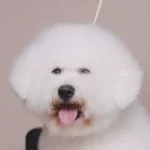 1: Bichon Frise
1: Bichon Frise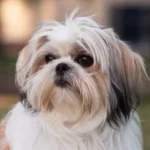
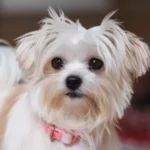 3: Maltese
3: Maltese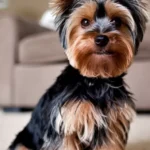 4: Yorkshire Terrier
4: Yorkshire Terrier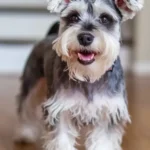 5: Miniature Schnauzer
5: Miniature Schnauzer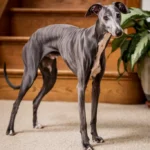 6: Italian Greyhound
6: Italian Greyhound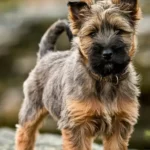 7: Cairn Terrier
7: Cairn Terrier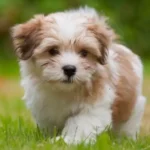 8: Havanese
8: Havanese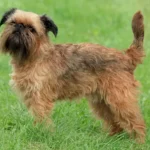
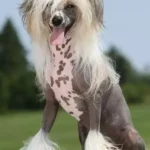 10: Chinese Crested
10: Chinese Crested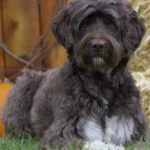 1: Portuguese Water Dog
1: Portuguese Water Dog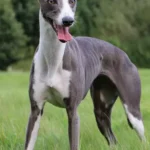 2: Whippet
2: Whippet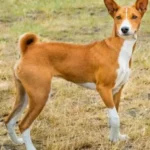 3: Basenji
3: Basenji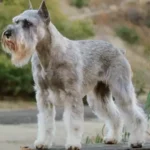 4: Standard Schnauzer
4: Standard Schnauzer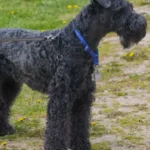 5: Kerry Blue Terrier
5: Kerry Blue Terrier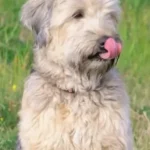 6: Soft Coated Wheaten Terrier
6: Soft Coated Wheaten Terrier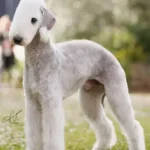 7: Bedlington Terrier
7: Bedlington Terrier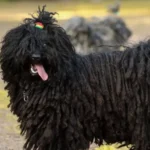 8: Puli
8: Puli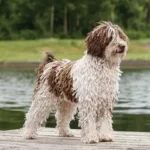 9: Spanish Water Dog
9: Spanish Water Dog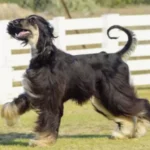 1: Afghan Hound
1: Afghan Hound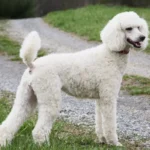 2: Standard Poodle
2: Standard Poodle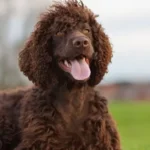 3: Irish Water Spaniel
3: Irish Water Spaniel 4: Komondor
4: Komondor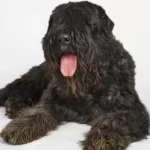 5: Bouvier des Flandres
5: Bouvier des Flandres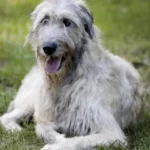 6: Irish Wolfhound
6: Irish Wolfhound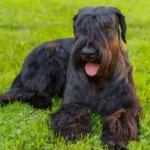 7: Giant Schnauzer
7: Giant Schnauzer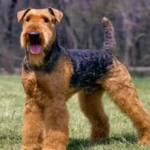 8: Airedale Terrier
8: Airedale Terrier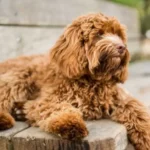 9: Labradoodle
9: Labradoodle